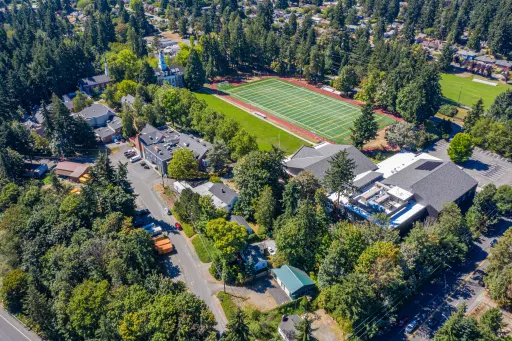The 30 Best Elementary Schools in North Carolina: Guide for Parents
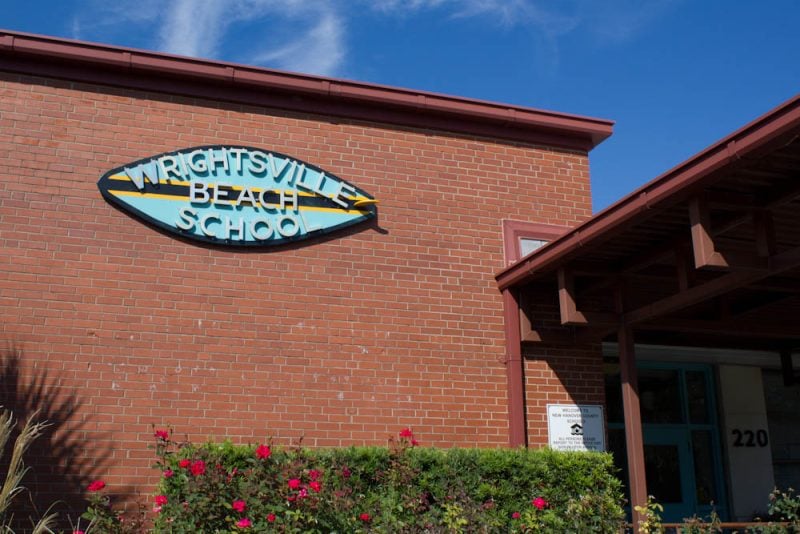
North Carolina offers families numerous high-quality elementary education options across its diverse communities, from urban centers to rural towns.
Parents seeking the best educational foundation for their children can find exceptional elementary schools throughout the state that consistently demonstrate strong academic performance and positive learning environments.
The variety of top-performing schools spans different districts and geographic regions, providing options for families with varying needs and preferences.
Understanding which elementary schools excel in areas such as academic achievement, student support, and overall educational quality helps parents make informed decisions about their children’s education.
These standout institutions share common characteristics that contribute to student success while maintaining their unique community identities.
The evaluation process considers multiple factors including test scores, school culture, and educational outcomes to identify schools that truly make a difference in students’ academic journeys.
Here are the 30 best elementary schools in North Carolina:
1. Wrightsville Beach Elementary School
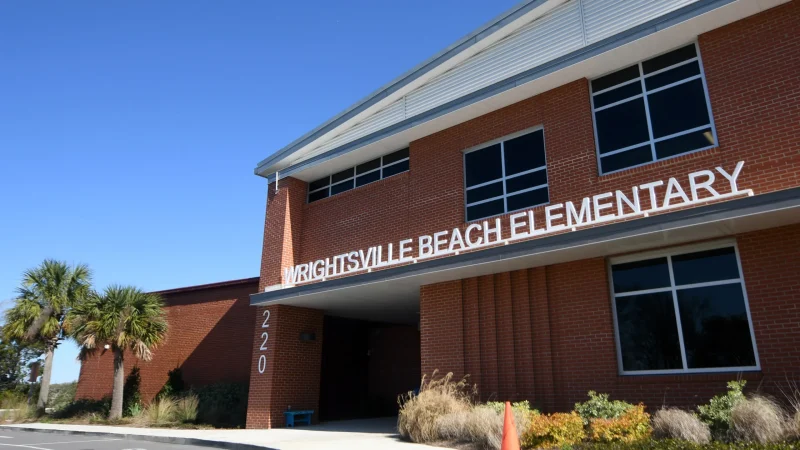
Wrightsville Beach Elementary School serves grades K-5 with a total enrollment of 263 students. The school consistently ranks among the top 2% of elementary schools in North Carolina.
Students at this school demonstrate exceptional academic performance on standardized tests. In mathematics, 91.3% of 3rd-graders scored proficient or better, significantly higher than the state average of 68.5%.
The school operates within zip code 28480, where public schools achieve an average score of 92% compared to the North Carolina state average of 51%. This represents one of the highest-performing school districts in the state.
Wrightsville Beach Elementary maintains its reputation as the single public elementary school serving the Wrightsville Beach community. The school’s academic excellence attracts families seeking high-quality elementary education in coastal North Carolina.
2. Brown Summit Middle School (Grade 6)
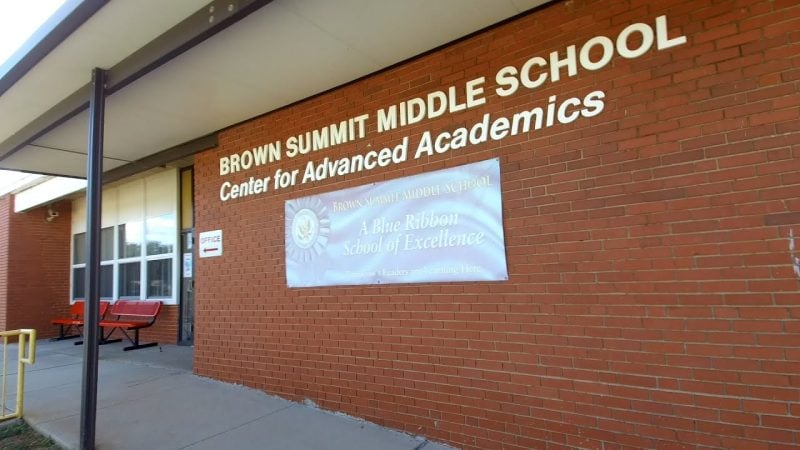
Brown Summit Middle School stands as North Carolina’s premier middle school institution. The school consistently ranks among the top 5 middle schools statewide and holds the #2 position out of 774 schools.
Located in Browns Summit, this Guilford County Schools magnet school serves 238 students in grades 6-8. The institution operates as a Gifted & Talented program facility.
The school receives exceptional ratings across multiple evaluation systems. SchoolDigger awards it a 5-star rating, while CarolinaSchoolHub gives it a perfect 10-star score.
Brown Summit Middle School falls within the top 1% of all North Carolina public schools. The institution maintains its address at 4720 N.C. Highway 150 E., Brown Summit NC 27214.
Students have access to 2 sports programs alongside rigorous academic offerings. The school’s magnet status allows it to provide specialized educational opportunities within the district’s 32 middle schools.
3. White Oak Elementary School
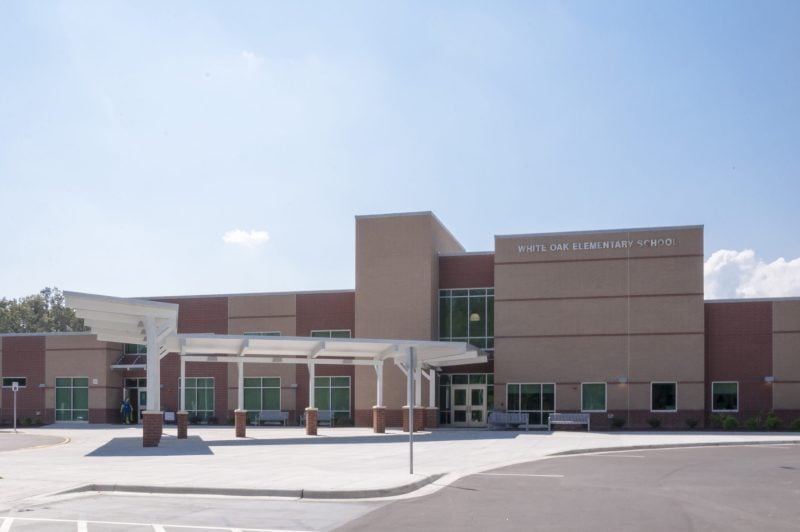
White Oak Elementary School stands as the top-ranked elementary school in North Carolina. The school earned a 5-star rating and holds the #1 position among 1,505 elementary schools statewide.
Located in Apex, the school operates within the Wake County School District. It serves 785 students in grades prekindergarten through 5th grade.
The school maintains a student-to-teacher ratio of 14.6 students per teacher. This ratio supports individualized attention and academic achievement.
White Oak Elementary offers a Gifted and Talented program for advanced learners. The school consistently performs in the top 1% of all public elementary schools across North Carolina.
Students at White Oak Elementary benefit from strong academic programs and dedicated faculty. The school’s performance metrics demonstrate excellence in student outcomes and educational quality.
4. Concord Elementary Schools

Concord’s elementary schools operate within the Cabarrus County Schools district, which ranks 66 out of 242 school districts statewide. The district maintains a 4-star rating from SchoolDigger.
Elementary schools in Concord achieve an average ranking of 8 out of 10. This places them in the top 30% of North Carolina public elementary schools.
The student population reflects significant diversity, with minority enrollment at 67% of the student body. This percentage exceeds the state average of 57% for North Carolina public elementary schools.
Concord houses 15 elementary schools total within its boundaries. These schools serve students across multiple ZIP codes including 28025, 28027, 28031, 28036, 28075, 28078, 28081, and 28083.
Parents have access to both traditional public schools and specialized options. STEAM programs and other educational approaches provide varied learning environments for elementary students in the Concord area.
5. Sunset Park Elementary School
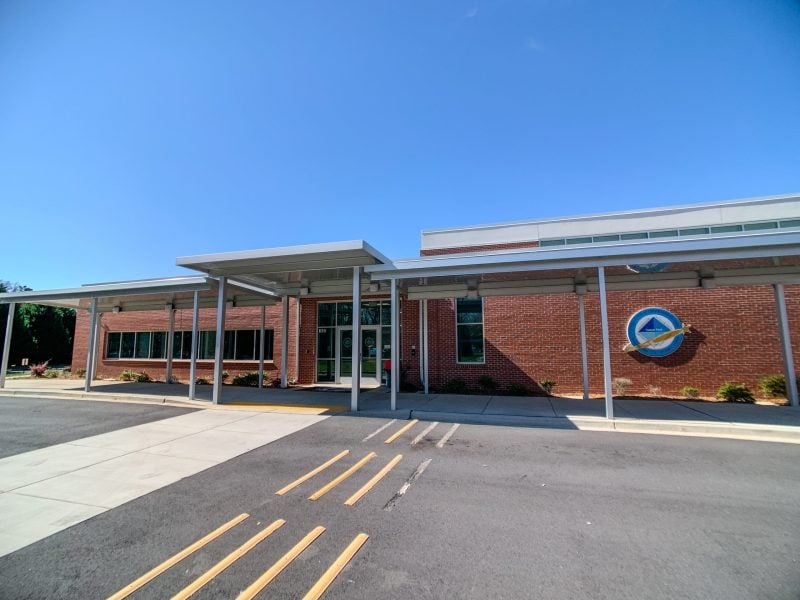
Sunset Park Elementary School stands as a distinguished institution in North Carolina’s educational landscape. The school maintains strong academic standards through its dedicated teaching staff and comprehensive curriculum.
Students at Sunset Park Elementary benefit from small class sizes that promote individualized attention. Teachers focus on building foundational skills in reading, mathematics, and science through evidence-based instructional methods.
The school offers various enrichment programs including art, music, and physical education. These programs support well-rounded development beyond core academic subjects.
Sunset Park Elementary emphasizes parent involvement and community partnerships. Regular communication between families and educators helps create a supportive learning environment for all students.
The administration prioritizes creating a safe and inclusive school culture. Students develop both academically and socially through structured learning experiences and positive behavioral support systems.
6. Forest Hills Elementary School
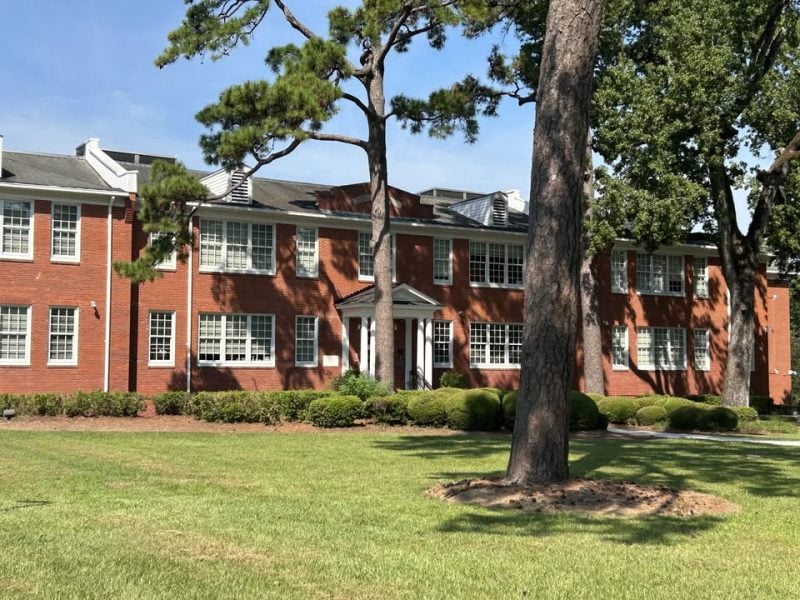
Forest Hills Elementary School serves students in kindergarten through fifth grade in Wilmington, North Carolina. The school is located at 602 Colonial Drive in the 28403 zip code area.
The school operates within the New Hanover County School District system. It maintains regular school hours from 7:40 AM to 2:35 PM daily.
Forest Hills Elementary enrolls 456 students across its grade levels. The school offers a Gifted and Talented program for qualifying students.
Diego Lehocky serves as the school’s principal. The institution can be reached by phone at (910) 251-6190.
The school is one of 25 elementary schools operating within the New Hanover County School District. It provides educational services to families in the Forest Hills area of Wilmington.
7. Lake Myra Elementary School
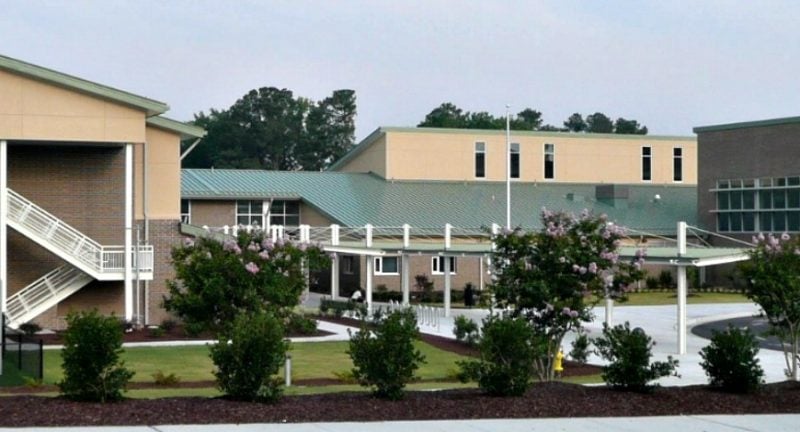
Lake Myra Elementary School serves students from pre-kindergarten through 5th grade in Wendell, North Carolina. The school operates within the Wake County Schools district.
The school enrolls 672 students and maintains a student-to-teacher ratio of 13.6 to 1. This ratio provides students with reasonable access to individual attention from educators.
Lake Myra Elementary ranks #881 out of 1,536 elementary schools statewide, placing it in the 43rd percentile. The school offers a Gifted and Talented program for advanced learners.
The student body represents diversity with White, African American, and Hispanic students. Lake Myra Elementary participates in the Title I program, which provides additional federal funding for schools serving high percentages of low-income families.
The school emphasizes character development through the 7 Habits program. This approach aims to develop leadership qualities in students and encourage positive community impact.
8. Sedgefield Middle School (Grade 6)
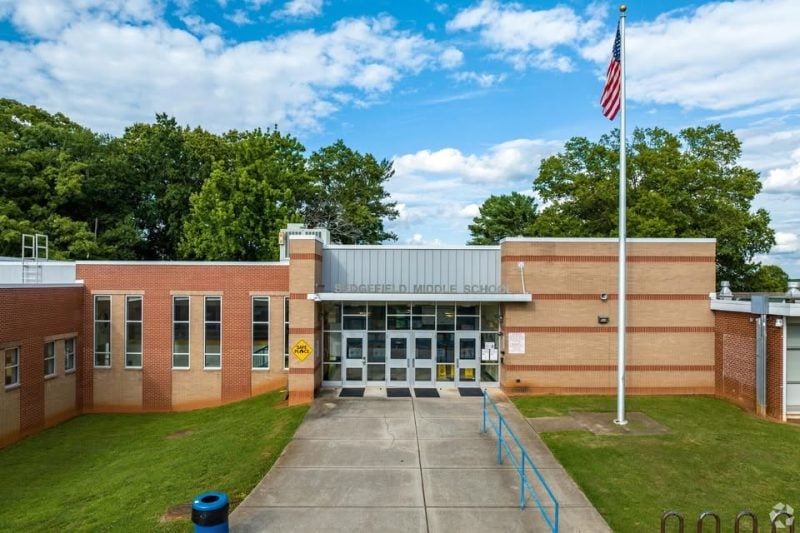
Sedgefield Middle School operates as a public institution in Charlotte, North Carolina, within the Charlotte-Mecklenburg School District. The school serves 484 students across grades 6-8.
The school maintains a student-to-teacher ratio of 15.3:1 with approximately 32 full-time teachers on staff. This ratio provides students with adequate individual attention during their academic experience.
Sedgefield Middle offers specialized programs including Gifted & Talented education and Project Lead The Way curriculum. The school also provides two sports programs for student participation.
The institution ranks #250 out of 774 middle schools statewide, placing it in the 68th percentile among North Carolina middle schools. This ranking reflects solid academic performance within the state’s educational landscape.
Located in Charlotte’s urban setting, Sedgefield Middle School focuses on educating the whole child through its comprehensive educational approach.
9. Union Elementary School
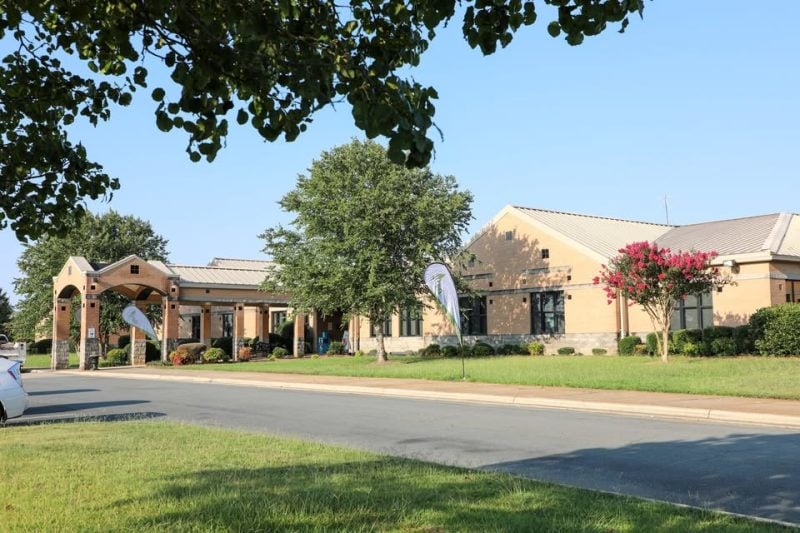
Union Elementary School operates as a public institution in Wingate, North Carolina, within the Union County Public Schools district. The school serves 279 students across grades 1 through 12, making it a comprehensive educational facility.
The school maintains a student-to-teacher ratio of 13.0 to 1, providing reasonable class sizes for personalized attention. This ratio allows teachers to work closely with students on individual learning needs.
Union Elementary ranks as the 1,298th largest public elementary school in North Carolina. Within the national context, it holds the 42,063rd position among elementary schools across the United States.
The school benefits from being part of Union County Public Schools, a district known for strong academic performance. Union County elementary schools collectively maintain high rankings within North Carolina’s educational system.
10. Carver Elementary School
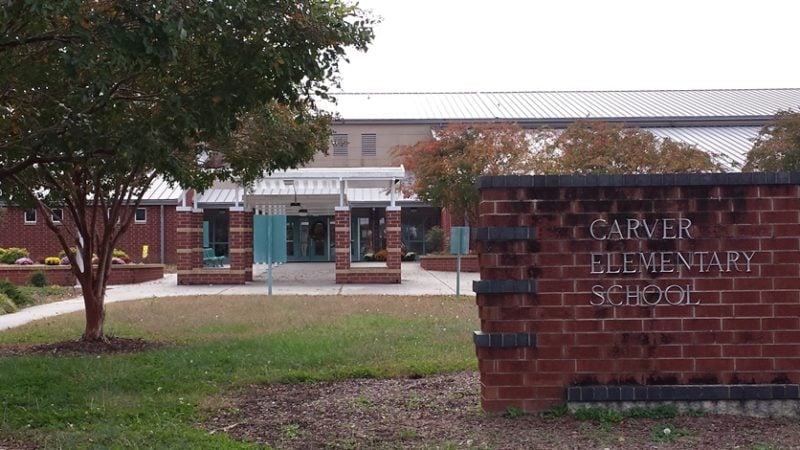
Carver Elementary School operates in multiple locations across North Carolina, with notable campuses in Wendell and Mount Olive. The school demonstrates solid academic performance statewide.
The Wendell campus receives a 7/10 rating from GreatSchools and ranks #893 out of 1,536 elementary schools in North Carolina. This places the school in the 42nd percentile among state elementary schools.
The Mount Olive location earns an even higher 8/10 rating from GreatSchools. Both campuses perform above average compared to other public and charter schools with similar grade levels in the state.
Academic metrics show the school maintains competitive standards in core subjects. Students demonstrate proficiency in math and reading assessments that meet state requirements.
The school serves diverse student populations and provides educational programs aligned with North Carolina’s academic standards.
11. Greenville Elementary School
Greenville Elementary School serves students in Greenville, North Carolina as part of the Pitt County Schools district. The school provides educational services to children in the early elementary grades.
The institution follows North Carolina’s standard curriculum requirements for elementary education. Students receive instruction in core subjects including mathematics, reading, language arts, science, and social studies.
Greenville Elementary maintains typical elementary school facilities including classrooms, a library, and administrative offices. The school operates during regular school hours following the district’s academic calendar.
Teachers at Greenville Elementary hold appropriate state certifications for elementary education. The school participates in state testing programs to assess student academic progress.
The school serves families within its designated attendance zone in Greenville. Parents can access information about enrollment procedures through the Pitt County Schools district office.
Greenville Elementary operates as a traditional public elementary school without specialized program focus.
12. Highland Elementary School
Highland Elementary School serves students in the mountain community of Highlands, North Carolina. The school operates within the Macon County School System and maintains strong academic standards for its elementary-age population.
The school emphasizes both traditional academic subjects and enrichment programs. Students receive instruction in core areas including mathematics, reading, science, and social studies.
Highland Elementary benefits from its small mountain community setting. This environment allows for smaller class sizes and more individualized attention for students.
The school participates in North Carolina’s standard assessment programs. Teachers work to prepare students for state-required testing while maintaining focus on comprehensive learning experiences.
Community involvement plays an important role at Highland Elementary. Local families and businesses often support school programs and activities throughout the academic year.
The school’s location in western North Carolina provides unique opportunities for outdoor education. Students can engage with the natural environment as part of their learning experience.
13. West Lake Elementary School
West Lake Elementary School serves 572 students in prekindergarten through fifth grade in Apex, North Carolina. The school operates within the Wake County School District, one of 121 elementary schools in the district.
The school consistently ranks in the top 20% of all public schools in North Carolina. West Lake Elementary earned the 298th position out of 1,536 elementary schools statewide, placing it in the 81st percentile.
Students at West Lake Elementary demonstrate strong academic performance on state standardized tests. The school shows particular strength in mathematics and science, with scores surpassing both state and district averages.
West Lake Elementary offers a Gifted and Talented program for qualifying students. The school maintains its reputation as a high-performing institution within North Carolina’s educational landscape.
The campus is located at 4500 West Lake Road in Apex, serving families in the surrounding community.
14. Beaverdam Elementary School
Beaverdam Elementary School serves students from pre-kindergarten through fifth grade in Raleigh, North Carolina. The school operates within the Wake County School District, one of the state’s largest educational systems.
Principal Valencia McCoy and Assistant Principal Jeffrey Henry lead the school’s administration. The faculty focuses on developing global citizens through collaboration, creativity, communication, and critical thinking skills.
The school enrolls 641 students with a student-to-teacher ratio of 12.2 to 1. This relatively small class size allows for more individualized attention in the classroom setting.
Beaverdam Elementary offers a Gifted and Talented program for academically advanced students. The school serves a diverse student population in the Raleigh area.
The campus emphasizes innovative teaching approaches and community engagement. Staff members work to prepare students for academic success and future educational opportunities.
15. Emerald School of Excellence
Emerald School serves students in the Charlotte-Mecklenburg Schools district. The school focuses on providing quality education through experienced teaching staff and comprehensive academic programs.
The school offers core subjects including mathematics, language arts, science, and social studies. Students participate in enrichment activities designed to support their academic growth and personal development.
Emerald maintains smaller class sizes to ensure individualized attention for students. Teachers work closely with families to monitor student progress and address learning needs.
The school provides various extracurricular opportunities including art programs and physical education activities. These programs help develop well-rounded students beyond traditional classroom learning.
Emerald emphasizes building strong reading foundations in early grades. The school implements literacy programs to support students at different skill levels and learning paces.
16. Topsail Annendale Elementary School
Topsail Elementary School serves students in Pre-Kindergarten through 5th grade in Hampstead, North Carolina. The school operates within the Pender County Schools District.
The school enrolls 517 students with a student-teacher ratio of 17 to 1. This ratio allows for manageable class sizes that support individual student attention.
Topsail Elementary spends $8,529 per student on education. The school offers a Gifted & Talented program for academically advanced students.
The institution is one of 11 elementary schools in the Pender County School District. Pender County Schools received recognition from the North Carolina Department of Public Instruction for academic performance and graduation rates during the 2023-24 school year.
Families choose Topsail Elementary for its specialized programs and community location in Hampstead. The school maintains its commitment to providing quality elementary education in coastal North Carolina.
17. Aldersgate Weekday School
Aldersgate Weekday School serves students in Charlotte, North Carolina within the Charlotte-Mecklenburg Schools district. The school maintains a focus on academic excellence and student development.
The school offers a comprehensive curriculum that includes core subjects such as mathematics, reading, science, and social studies. Teachers work to create engaging learning environments that support diverse learning styles.
Aldersgate Weekday provides various extracurricular activities and programs designed to enhance the educational experience. These opportunities help students develop skills beyond traditional classroom instruction.
The school community includes dedicated staff members who collaborate with families to support student success. Parent involvement plays an important role in the school’s operations and student achievement.
Aldersgate Weekday continues to work toward meeting state educational standards and preparing students for their academic futures. The school strives to create a positive learning environment for all enrolled students.
18. Glenwood Elementary School
Glenwood Elementary School ranks among the top 10% of public schools in North Carolina. The school serves 408 students in grades Kindergarten through 5 in Chapel Hill.
The school operates within the Chapel Hill-Carrboro City School District as one of 12 elementary schools. It maintains a student-to-teacher ratio of 13.6 students per teacher.
Glenwood Elementary offers a Gifted and Talented program for qualifying students. The school ranks #119 out of 1,462 schools for best public elementary school teachers in the state.
The school also ranks #328 out of 1,565 for diversity among North Carolina’s public elementary schools. Chapel Hill’s location provides students with access to educational and cultural resources in the Research Triangle area.
19. Windsor Elementary School
Windsor Elementary School serves students from pre-kindergarten through 5th grade in Windsor, North Carolina. The school enrolls approximately 350 students within the Bertie County Schools district.
The school serves a predominantly African American student population, with 80.18% of students identifying as such. Nearly all students qualify for free or reduced-price lunch programs, with 99.09% participation rates indicating high poverty levels in the community.
Windsor Elementary School ranks #1027 out of 1536 elementary schools statewide, placing it in the 33rd percentile for North Carolina. This ranking positions the school within the bottom 50% of public elementary schools across the state.
The school receives a 4-star rating on a 10-point scale according to educational assessment metrics. Despite ranking challenges, the school continues serving its community’s educational needs in rural eastern North Carolina.
20. Olde Providence Elementary School
Providence Elementary School serves students in Caswell County, North Carolina. The school provides educational programs for pre-kindergarten through fifth grade students.
Located in rural North Carolina, the school operates within the Caswell County Schools district. This district manages several educational institutions across the county.
The school focuses on foundational academic skills including reading, mathematics, and science. Teachers work to support students in developing essential learning abilities during their elementary years.
Providence Elementary maintains standard North Carolina curriculum requirements. The school follows state educational guidelines and assessment protocols.
Class sizes at Providence Elementary allow for individualized attention between teachers and students. The school environment emphasizes community connections and local engagement.
Faculty members hold appropriate teaching certifications and participate in ongoing professional development. The school provides resources to support both academic learning and student development needs.
21. Eastway Elementary School
Eastway Elementary School serves students from prekindergarten through fifth grade in Durham, North Carolina. The school is part of the Durham Public Schools district and enrolls approximately 393 to 577 students.
The school maintains a student-teacher ratio of 11.8 students per teacher. This ratio provides opportunities for more individualized attention in classroom settings.
Eastway Elementary offers a Gifted and Talented program for qualifying students. The school is located at 610 North Alston Avenue in Durham.
The school’s mission focuses on empowering students, families, and the community as collaborative partners. They emphasize innovative learning experiences that promote critical thinking skills.
Eastway Elementary ranks in the lower percentile among North Carolina elementary schools. The school faces academic challenges but continues to serve its community with dedicated staff and programs designed to support student growth.
22. Cliffside Elementary School
Cliffside Elementary School in Cliffside, North Carolina is a small rural public school serving kindergarten through fifth grade as part of Rutherford County Schools. It enrolls about 196 students, with a student-teacher ratio of roughly 14 to 1.
Nearly all students come from low-income families, as indicated by eligibility for free school lunch. The student body is predominantly White, with smaller percentages of Hispanic, African American, and multiracial students.
Academic outcomes are relatively strong: around 72% of students are proficient in math and about 62% in reading. The school offers a Gifted & Talented program and emphasizes community, family engagement, and strong foundational learning.
It operates in a rural setting and places priority on supportive teacher-student connections, resource access, and helping every child succeed.
The building has a long history, and Cliffside Elementary remains an integral part of its community.
23. Macedonia Elementary School
Macedonia Elementary School serves students in the Charlotte-Mecklenburg Schools district. The school focuses on providing comprehensive academic programs that support student growth across multiple grade levels.
Teachers at Macedonia Elementary implement research-based instructional methods. They work to create engaging learning environments that accommodate different learning styles and academic needs.
The school offers various extracurricular activities and enrichment programs. These opportunities help students develop interests beyond the standard curriculum while building important social skills.
Macedonia Elementary maintains partnerships with families and community organizations. These collaborations strengthen the educational experience and provide additional resources for student success.
The facility includes updated classrooms and learning spaces designed to support modern educational practices. Technology integration plays a role in daily instruction across subject areas.
Administrative staff and teachers participate in ongoing professional development. This commitment helps ensure instructional practices remain current and effective for student learning outcomes.
24. Hunter Magnet Elementary School
Hunter Elementary School operates as a magnet school in Raleigh, North Carolina. The school serves 630 students across prekindergarten through fifth grade.
This institution ranks within the top 20% of all public schools in North Carolina. Hunter Elementary holds the #174 position out of 1,536 elementary schools statewide, placing it in the 89th percentile.
The school offers a Gifted & Talented program as part of its specialized curriculum. It functions as one of 121 elementary schools within the Wake County School District.
Hunter Elementary demonstrates strong socioeconomic diversity. Only 30% of students receive free and reduced lunch assistance, significantly below the state average of 75.3%.
The school has earned recognition for its academic performance and educational programs. Its magnet school status allows it to provide specialized learning opportunities for students in the Raleigh area.
25. Riverwood Elementary School
Riverwood Elementary School ranks within the top 20% of all public elementary schools in North Carolina. The school is located in Clayton and serves 739 students in grades prekindergarten through 5.
The school operates within the Johnston County School District as one of 26 elementary schools in the district. Riverwood Elementary maintains a student-to-teacher ratio of 14.3 students per teacher.
According to statewide rankings, the school holds the #205 position out of 1,536 elementary schools in North Carolina. This places Riverwood Elementary in the 87th percentile statewide.
The school offers a Gifted & Talented program for qualifying students. Riverwood Elementary has received a 9-star rating on a 10-star scale from educational analysis organizations.
The school serves the Clayton community and surrounding areas in Johnston County. Test scores and academic performance data contribute to its strong ranking among North Carolina elementary schools.
26. Shawboro Elementary School
Shawboro Elementary School serves students from kindergarten through 5th grade in Currituck County School District. The school consistently ranks among the top performers in North Carolina.
The elementary school receives an 8/10 average ranking, placing it in the top 30% of North Carolina public elementary schools. It ranks #559 out of 1,536 elementary schools statewide, earning a position in the 64th percentile.
Academic performance exceeds both district and state averages in key subject areas. The school offers a Gifted & Talented program to support advanced learners.
Student demographics show 18% minority enrollment, with Hispanic students representing the majority of minority students. This percentage falls below the state average of 56% minority enrollment.
Shawboro Elementary operates as one of six elementary schools within the Currituck County School District, maintaining its reputation as a high-performing educational institution.
27. Oakview Elementary School
Oakview Elementary School serves students in the Wake County Public School System. The school is located in New Hill, North Carolina, a small community in the southwestern part of Wake County.
The school focuses on providing quality elementary education to its student population. Teachers work to create engaging learning environments that support academic growth across core subjects.
Oakview Elementary emphasizes building strong foundational skills in reading, mathematics, and science. The school maintains smaller class sizes that allow for more individualized attention and support.
The facility includes modern classrooms and educational resources designed to enhance student learning. Staff members collaborate to implement curriculum standards and track student progress throughout the academic year.
Parents and families are encouraged to participate in school activities and volunteer opportunities. The school maintains communication with families through various channels to keep them informed about student achievement and school events.
28. Albemarle Road Elementary School
Albemarle Road Elementary School serves 719-755 students in grades K-5 in Charlotte, North Carolina. The school operates within the Charlotte-Mecklenburg Schools district.
Located at 7800 Riding Trail Road, the school runs from 8:00 AM to 3:00 PM under Principal Monica Palmer’s leadership. The facility maintains a student-to-teacher ratio of 15.2 to 1.
The school offers a Gifted & Talented program for qualifying students. It ranks as the 222nd largest public elementary school in North Carolina.
Albemarle Road Elementary holds a ranking of #1265 out of 1536 elementary schools statewide, placing it in the 18th percentile. The school received a 2-star rating based on various performance metrics.
The Charlotte-Mecklenburg Schools district itself ranks 140 out of 242 districts in North Carolina with a 2-star rating.
29. Claxton Elementary School
Claxton Elementary School serves 469 students in grades Pre-K through 5 in Greensboro, North Carolina. The school operates within the Guilford County School District as one of 77 elementary schools in the system.
The school ranks in the top 50% of all public elementary schools across North Carolina. State rankings place Claxton Elementary at #463 out of 1,536 elementary schools statewide, positioning it in the 70th percentile.
Academic performance shows 58% of students achieving proficiency in mathematics and 57% in reading on state assessments. The school consistently outperforms both district and state averages in standardized testing.
Claxton Elementary maintains a student-teacher ratio of 14 to 1. The school offers a Gifted and Talented program for qualifying students.
The school receives an 8-star rating on a 10-star scale from CarolinaSchoolHub’s analysis system.
30. Jackson Park Elementary School
Jackson Park Elementary School serves 435 students in grades Kindergarten through 5th grade in Kannapolis, NC. The school operates within the Kannapolis City School District as one of seven elementary schools.
The school ranks #368 out of 1,536 elementary schools statewide, placing it in the 76th percentile. This performance earns Jackson Park a position within the top 50% of all North Carolina public schools.
Jackson Park offers a Gifted & Talented program for qualifying students. The school serves a high percentage of economically disadvantaged students while maintaining strong academic performance.
Academic results consistently exceed both district and state averages across multiple subjects and grade levels. The school demonstrated exceptional growth, ranking 12th among all North Carolina elementary schools for academic improvement.
Jackson Park also placed in the top 5% of all North Carolina schools for overall growth metrics.
What Makes an Elementary School Stand Out in North Carolina?
Outstanding elementary schools in North Carolina distinguish themselves through strong academic programs, comprehensive student support systems, and active community partnerships. These factors work together to create learning environments where students achieve high proficiency rates and develop foundational skills for future success.
Academic Excellence and Curriculum
Top-performing North Carolina elementary schools consistently demonstrate high student proficiency in reading and mathematics on state assessments. Schools like those in Wake County and Charlotte-Mecklenburg districts achieve these results through rigorous curriculum standards and data-driven instruction.
Key Academic Indicators:
- High state test scores in reading and mathematics
- Strong performance across all student demographic groups
- Advanced curriculum offerings beyond grade-level expectations
Many standout schools implement specialized programs such as STEM integration, dual-language immersion, or arts-focused curricula. These programs provide students with diverse learning opportunities while maintaining focus on core academic subjects.
Teachers at exceptional schools receive ongoing professional development and use research-based instructional methods. They adapt teaching strategies to meet individual student needs and maintain high expectations for all learners.
Student Support Services
Comprehensive support services help students overcome barriers to learning and achieve academic success. Top elementary schools provide intervention programs for students struggling with reading or mathematics concepts.
Schools recognize diverse learning needs through special education services, English language learner support, and gifted education programs. These services ensure every student receives appropriate instruction matched to their abilities and challenges.
Essential Support Elements:
- Reading intervention specialists
- Counseling and social-emotional learning programs
- Before and after-school tutoring
- Technology integration and digital literacy instruction
Mental health and behavioral support systems address students’ social-emotional development. School counselors and support staff create safe learning environments where students feel valued and supported.
Community and Parental Engagement
Strong partnerships between schools, families, and community organizations contribute significantly to student achievement. Parents actively participate in school decision-making through parent-teacher organizations and school improvement committees.
Effective schools maintain regular communication with families through multiple channels including digital platforms, newsletters, and conferences. Teachers provide frequent updates on student progress and offer specific suggestions for home support.
Community partnerships expand learning opportunities through mentorship programs, field trip destinations, and volunteer support. Local businesses and organizations contribute resources that enhance educational programs and provide real-world learning connections.
Schools with high parent satisfaction ratings typically offer flexible meeting times and provide translation services for non-English speaking families. They create welcoming environments where all families feel comfortable participating in their children’s education.
Understanding North Carolina’s Elementary School Ratings
North Carolina elementary schools receive ratings based on student proficiency in reading and math, state test performance, and various quality indicators. Multiple organizations evaluate schools using different methodologies, creating comprehensive ranking systems for parents and educators.
Key Performance Indicators
Student proficiency rates serve as the primary metric for evaluating elementary school quality in North Carolina. Schools track performance in reading and mathematics across all grade levels.
Test score trends over multiple years indicate whether schools maintain consistent academic standards. Rising or declining performance patterns help identify institutional strengths and areas needing improvement.
Demographic performance gaps measure how well schools serve students from different backgrounds. Successful schools demonstrate strong outcomes across racial, economic, and special needs populations.
Teacher qualifications and retention rates impact school ratings significantly. Schools with experienced, certified educators typically achieve higher performance rankings.
Student-teacher ratios affect individual attention and learning outcomes. Lower ratios generally correlate with better academic results and higher satisfaction ratings.
Role of State Assessments
End-of-Grade (EOG) tests in reading and mathematics form the backbone of North Carolina’s elementary school evaluation system. Students in grades 3-5 take these standardized assessments annually.
Performance levels range from Level 1 (limited proficiency) to Level 5 (superior performance). Schools receive ratings based on the percentage of students achieving proficiency levels 3, 4, and 5.
Growth measurements track individual student progress over time rather than just absolute performance. This approach accounts for students’ starting points and learning trajectories.
School performance grades combine proficiency rates with student growth data. The state assigns letter grades from A to F based on these combined metrics.
Accreditation and Recognition Programs
AdvancED accreditation validates that schools meet rigorous quality standards for curriculum, instruction, and leadership. This national recognition indicates comprehensive educational excellence.
Title I Distinguished Schools recognition honors high-performing schools serving significant populations of economically disadvantaged students. This designation highlights schools that achieve exceptional results despite demographic challenges.
National Blue Ribbon Schools represent the highest federal recognition for academic excellence. The U.S. Department of Education selects these schools based on outstanding performance or significant improvement.
State awards programs recognize schools for specific achievements like literacy improvement or innovative teaching practices. These honors complement standardized performance metrics with qualitative excellence indicators.

